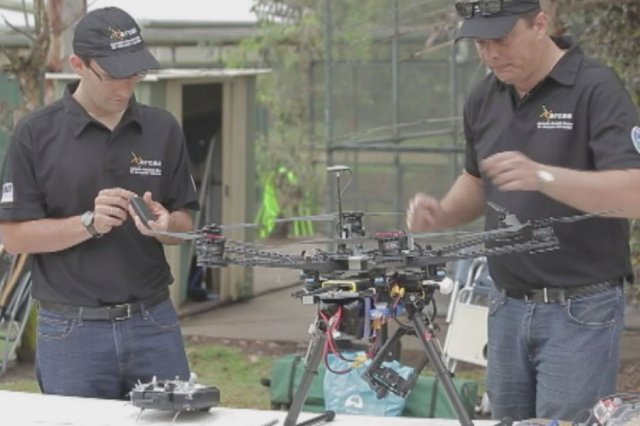Queensland researchers are hoping drones will aid in the conservation of threatened species like koalas. Traditionally, koalas were counted by people on the ground but now they can be tracked by robots from the air.
Researchers fitted drones, or unmanned aerial vehicles (UAVs), with infrared cameras to better detect the creatures.
QUT drone technician Gavin Broadbent said they were a little bit sceptical it would work, but they were filled with confidence when the images came through.
“We saw the koalas were very distinct compared to the trees and the environment so we thought, yes this is absolutely a proof of concept,” he said.
Hovering above the tree tops, the cameras detect the animals’ body heat and beam pictures straight back to the team of researchers on the ground.
Computer software helped distinguish koalas from other creatures that might be in the trees.
The first test flight was in bushland surrounding Australia Zoo on Queensland’s Sunshine Coast earlier this month.
“So this will drastically reduce the manpower, will greatly increase the area that can be covered to survey koalas and in areas where people may not be able to walk through because of dense undergrowth,” Australia Zoo’s senior vet Amber Gillett said.
The number of koalas in Queensland and New South Wales are decreasing and it is hoped the drone programme will help authorities better understand their numbers.
Research Fellow at the Queensland University of Technology, Dr Sandra Johnson, said the data could be used to make more informed decisions about koala management.
“There have been situations where people with the best intent relocated a population and it’s been disastrous and it’s because there are these unintended consequences that we do not understand, do not see.
“No-one can look into the future, but if we’ve got a solid base on which we can base our management decisions, then really we’re in a far stronger position and more likely to have positive outcomes for koalas.”
Deborah Tabart from the Australian Koala Foundation is fearful well-meaning research will do little to save the country’s population, which she estimates could be as low as 45,000.
She said governments must step in to save koala habitat.
“The koala is in severe trouble,” she said.
Project leader Dr Felipe Gonzalez hoped the programme was expanded to be used on other wildlife.
“We’re really excited about the technology because it opens many possibilities for different wildlife for relocation or rehabilitation of koalas or monitoring invasive species such as feral pigs or feral cats and wild dogs,” he said.
“The next step is to go to Fraser Island to monitor the dingo population.
Source: ABC News

